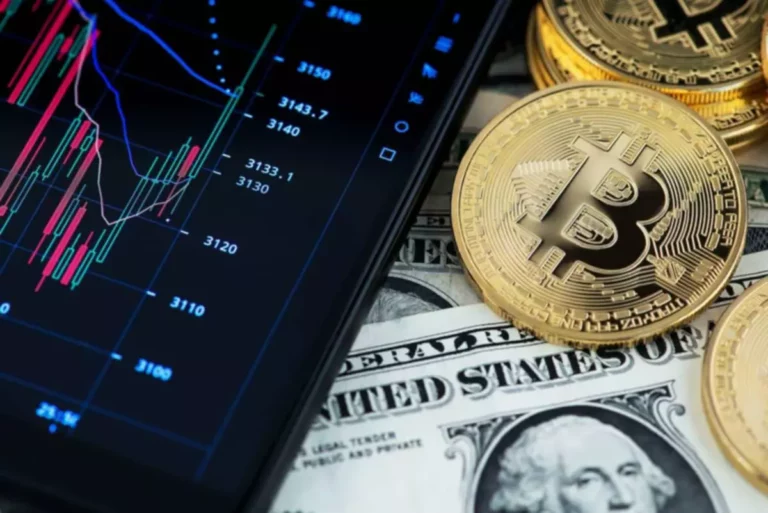There are a ton of ways to build day trading careers… But all of them start with the basics. The S&P 500 recovered its losses in just five months, a record-breaking turnaround. Earlier in September, the Dow hit 29,100.50, which was just 1.5 percent shy of the record in February. Here’s a look at each period where the Dow Jones industrial average doubled since the index topped 1250 for the first time in September 1983. The following is a list of the milestone closing levels of the Dow Jones Industrial Average.
1904 (0 record closes)
Journalist Charles Dow and his business partner, Edward Jones, established the Dow Jones Industrial Average in 1896 with 12 companies in the industrial sector. The number of companies included in the index increased to 20 in 1916 and then to the current number, 30, in 1928. Since then, the Dow has remained among the most frequently discussed and commonly tracked equities indexes. Trump was asked about the market after a selloff Monday and more trembling on the markets Tuesday. The market is currently bouncing around between 19,129 and 20,000. If we can recapture 20,000, then I think you have a shot at rallying pretty significantly.
(30 record closes)
Shares of Intel, IBM and Home Depot helped drive the record-setting rally. “40,000 is a great milestone, but end of the day there isn’t much difference between 39,999 and 40k,” Ryan Detrick, chief market strategist at Carson Group, said in a statement emailed Thursday. These big, round numbers don’t mean much, but they do serve as a reminder that over time stock investments can pay off. The S&P 500 has returned about 10.6% annually for the past 100 years, according to analysis from Trade That Swing. The following is a list of the record closes of the Dow Jones Industrial Average grouped by year since May 26, 1896.
- Since then, the index faced declines due to various factors such as inflation and geopolitical tensions.
- The Dow Jones surged past 25,000 in early 2018, marking a 30% gain from Election Day.
- This was the Dow’s third consecutive trading day with a record close and the fourth record closing in just two months.
- The Dow’s activity broke new records in terms of downward movement in 2009.
Trading Tools
- It was the largest amount since 2007, right before the stock market crashed.
- Panic selling gripped the market as businesses shut down and unemployment soared.
- The Dow Jones, S&P 500, and NASDAQ repeatedly hit record highs, fueled by corporate tax cuts, strong earnings, and market liquidity.
- It also has a selection of add-on alerts services, so you can stay ahead of the curve.
- Energy and healthcare also saw major shifts depending on government actions and policy debates.
It usually occurs within relatively longer bear markets and lasts about three years. Trump’s inauguration in January 2017 marked the continuation of the post-election stock rally, as traders anticipated pro-business policies. Market indexes like the Dow Jones and S&P 500 saw nonfarm payrolls forecast gains in the following weeks, driven by optimism about tax cuts and deregulation. Investors and traders positioned themselves for success by focusing on sectors expected to benefit from the new administration’s economic agenda.
How Are Companies in the Dow Jones Industrial Average Selected?
For example, during the Great Depression in the 1930s, the Dow dropped dramatically, losing nearly 90% of its value. More recently, in March 2020, the Dow plunged almost 3,000 points in a single day due to the COVID-19 pandemic, marking one of the worst days in its history. 23The Dow first traded above 35,000 on Monday, May 10, 2021, before closing below it for the day. After two and a half months worth of several attempts, the Dow finally closed above 35,000 on Friday, July 23, 2021.
StocksToTrade in no way warrants the solvency, financial condition, or investment advisability of any of the securities mentioned in communications or websites. In addition, StocksToTrade accepts no liability whatsoever for any direct or consequential loss arising from any use of this information. This information is not intended to be used as the sole basis of any investment decision, should it be construed as advice designed to meet the investment needs of any particular investor. Future policies, elections, and economic trends will determine how much impact Trump’s past policies continue to have. StocksToTrade has the trading indicators, dynamic charts, and stock screening capabilities that traders like me look for in a platform.
The market responded positively to wholesale prices increasing 0.2% last month, higher than projections of 0.1%, according to FactSet. The S&P 500 index and Nasdaq have similarly peaked at record highs this year as technology stocks like Nvidia have swelled—though Nvidia is not a Dow Jones component. Trump’s presidency saw some of the fastest stock market gains in history. The Dow Jones, S&P 500, and NASDAQ repeatedly hit record highs, fueled by corporate tax cuts, strong earnings, and market liquidity.
Tips for Successful Trading
A November streak occurred after Donald Trump’s presidential win on Nov. 8. Traders were confident in a business-friendly Republican president. The index had three nine-day runs, last occurring in 1955 (when there were four nine-day stretches). The Dow continuously moved higher eight months in a row (the last occurrence of this was in 1995). The index closed above 23,000 on Oct. 18, 2017; slightly more than a month later, it broke 24,000.
The Early 2020s Bull Market (2020–
The Dow closed at a record high of 29,551.42 on Feb. 12, which was one week before the S&P 500 and the Nasdaq Composite reached their respective record highs. The coronavirus pandemic has sent investors on a rollercoaster ride in 2020. The Dow Jones Industrial Average (DJIA) recorded its biggest one-day point drop in March, which was a little more than a nornikel month after its all-time high. The longest bull market in history lasted approximately 11 years, starting in March 2009 and ending in Feb. 2020. The DJIA remains one of the most closely watched indicators of economic health.
US stock market ended higher on Wednesday after the Federal Reserve kept interest rates unchanged as widely expected. Asian markets traded higher on Thursday following overnight rally on Wall Street after the US Fed policy. On Wednesday, the Indian stock market ended higher for the third consecutive session, with the benchmark Nifty 50 closing above 22,900 level.
While long-term investors benefited from overall market growth, active traders profited from sharp moves caused by trade wars, Federal Reserve decisions, and policy shifts. Those who followed economic data, company earnings, and government actions had the best chances of navigating the unpredictable market conditions. A secular bull market is a period in which the stock market index is continually reaching all-time highs with only brief periods of correction, as during the 1990s, and can last upwards of 15 years. A cyclical bull market is a period in which the stock market index is reaching 52-week or multi-year highs and may briefly peak at all-time highs before a rapid decline, as in the early 1970s.
Perhaps the most infamous trough was during the Great Depression, in which the Dow lost about 90% of its value over three years. It hit a low of 41.22 in 1932 (about 908 points, inflation-adjusted).
Traders who followed economic trends, interest rates, and government policies found key opportunities. Trump’s first year in office saw one of the strongest stock market performances for a first-year president. The Dow Jones surged past 25,000 in early 2018, marking a 30% gain from Election Day. The S&P 500 and NASDAQ also hit all-time highs, boosted by corporate tax cuts and deregulation efforts that increased investor confidence. Traders who adapted to Trump’s market saw success by capitalizing on volatility, tax-cut-driven rallies, and sector-specific trends.
Asian markets traded higher, while the US stock market rallied overnight after the Fed policy. While the cooling inflation report was reassuring for investors, the budding trade war between the US and its biggest trading partners and allies has sent jitters through US stocks. spread betting vs cfd US stocks slid Thursday and the S&P 500 closed in correction, down more than 10% from its record high in February, as President Donald Trump threatened new tariffs on the European Union. Tariffs on Chinese goods impacted industries like technology and manufacturing, causing short-term market sell-offs. However, traders who adapted to these swings found opportunities in stocks that benefited from domestic production shifts.





.jpeg)
.jpeg)
.jpg)
.jpg)
.jpeg)
.jpg)
.jpg)